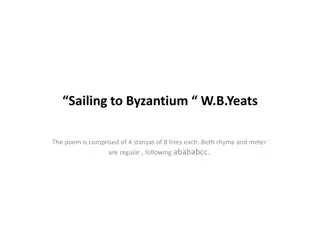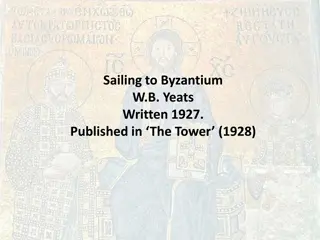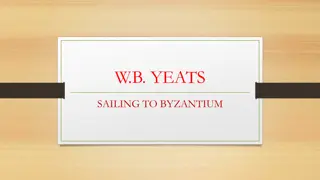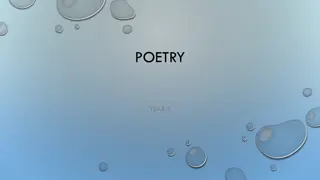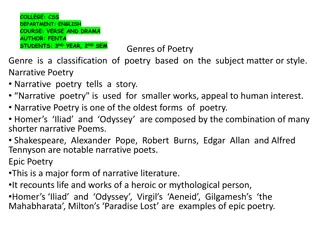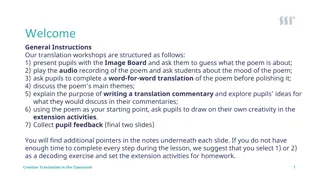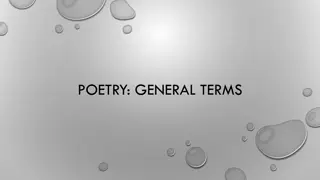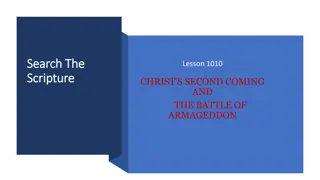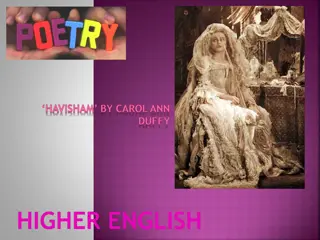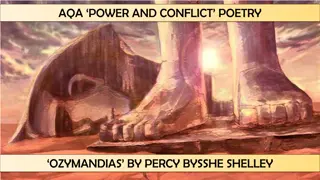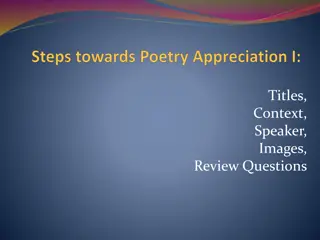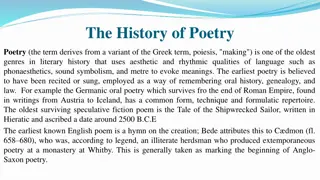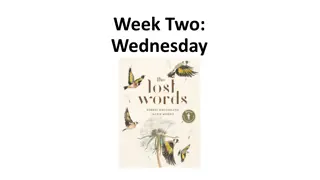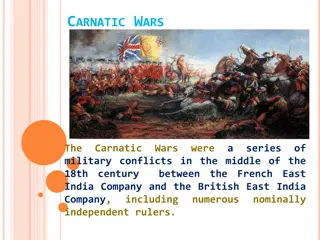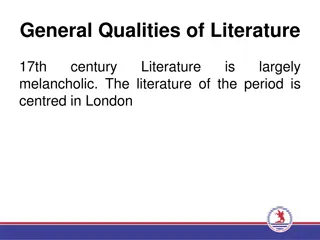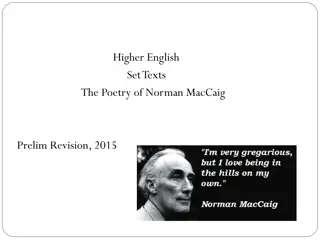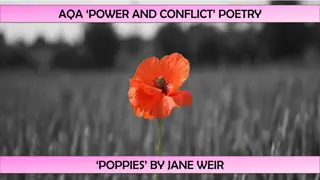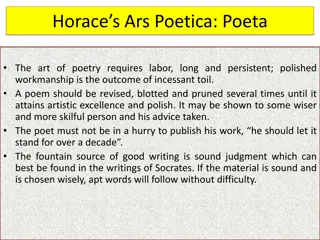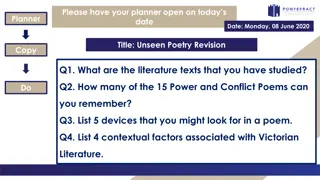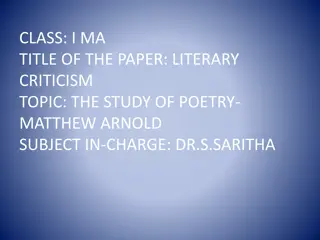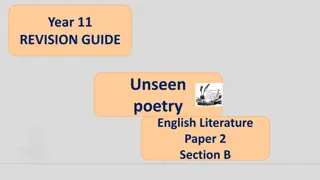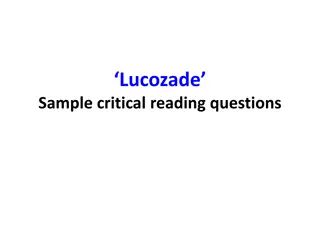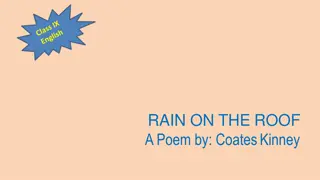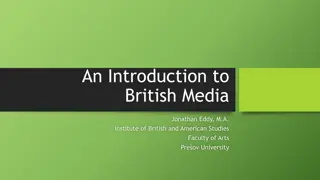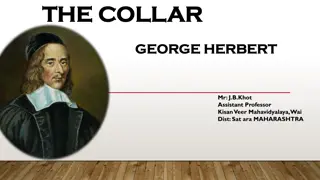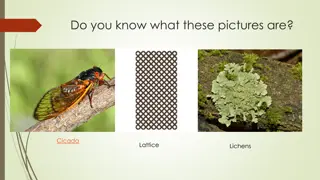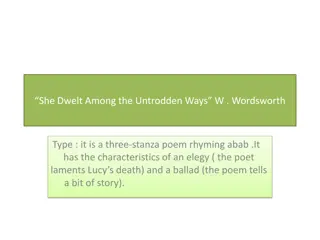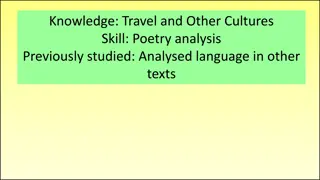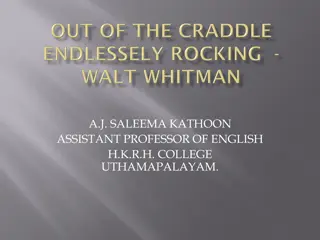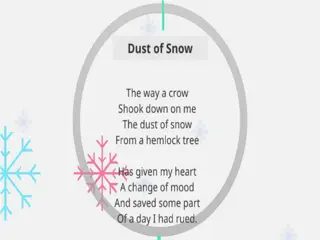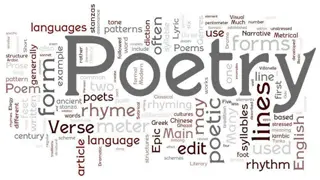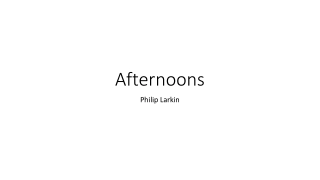Analysis of W.B. Yeats' Poem "The Second Coming" in Modern British and American Poetry
The analysis delves into the prominent themes of mortality, violence, and prophecy in W.B. Yeats' well-known poem "The Second Coming." Yeats' exploration of the idea of a Second Coming as a harbinger of a tumultuous future and his use of powerful symbols like the falcon and gyres showcase his distinct poetic style and thought-provoking commentary on the state of the world. His blend of Romanticism with Modernism and emphasis on Irish nationalism contribute to the complex layers of meaning in this iconic work.
Download Presentation

Please find below an Image/Link to download the presentation.
The content on the website is provided AS IS for your information and personal use only. It may not be sold, licensed, or shared on other websites without obtaining consent from the author. Download presentation by click this link. If you encounter any issues during the download, it is possible that the publisher has removed the file from their server.
E N D
Presentation Transcript
THE SECOND COMING BY W B YEATS MA III SEM PAPER X MODERN BRITISH AND AMERICAN POETRY GOVERNMENT DEGREE COLLEGE PAONTA SAHIB HP
Key Points in YeatsRomanticism A major characteristic of the Modern period (see next slide) 18th century and Victorian Reason gt imagination Romanticism and Modernism Imagination gt reason Irish nationalismCeltic revival, esp. in theater (somewhat like the emphasis on the primitive) Used a variety of myths Christian, classical, his own like Blake, private myth-making Maud Gonnethe woman who got away Terms antinomies, gyres Important themes art, aging, sexuality
The Second ComingThe poem is about mortality. Yeats was old and facing death he may have taken some comfort in the idea that history was about to end an era. Imagery falcon and falconer spiral/gyre. WW I blood-dimmed tide and ceremony of innocence. Spiritus Mundi (spirit of the world) may be the collective unconscious the storehouse of archetypal symbols. Its source of this particular image is in ancient Egypt, which is felt to be impervious to the humanitarian, individualistic tendency of Christianity (Rosenthal). See Matthew 2429-31 for a version of the second coming cf. Johns vision of the anti-Christ in Revelation. The poem is a Greater Romantic Lyric.
33 GyresThe end of an age, which always receives the revelation of the character of the next age, is represented by the coming of the gyre to its place of greatest expansion and of the other to that of its greatest contraction. At the present moment the life gyre is sweeping outward, unlike that before the birth of Christ which was narrowing, and has almost reached its greatest expansion. The revelation which approaches will however take its character from the contrary movement of the interior gyre (Yeats in Michael Robartes and the Dancer).
Major Themes of The Second Coming: Violence, Prophecy meaninglessness Yeats emphasizes that the present world is falling apart, and a new ominous reality is going to emerge. The idea of the Second Coming is not Biblical. To him, the Second Coming is not a savior that is going to restore the business of humanity, but a sphinx that will add more to the agony and destruction of the world. He argues that people are moving away from the center and there is no hope in the future due to the chaos. And those, who wish for any spiritual guidance, are living in fool s paradise
SYMBOL As soon as Yeats introduces the idea of a Second Coming as salvation, he uses his most powerful symbol --the Sphinx --to offer his prediction of the future of the world and of humanity. As soon as he alludes to Christ, a "vast image" of a pagan religion appears to wander toward Bethlehem.
IMAGERY Yeats' poem The Second Coming subverts the traditional story of Christ's return to save the rituous. Instead, he uses horrific and twisted animal imagery to symbolize an aspect of the world's imminent end, without salvation. Falcon Gyre sphinx


